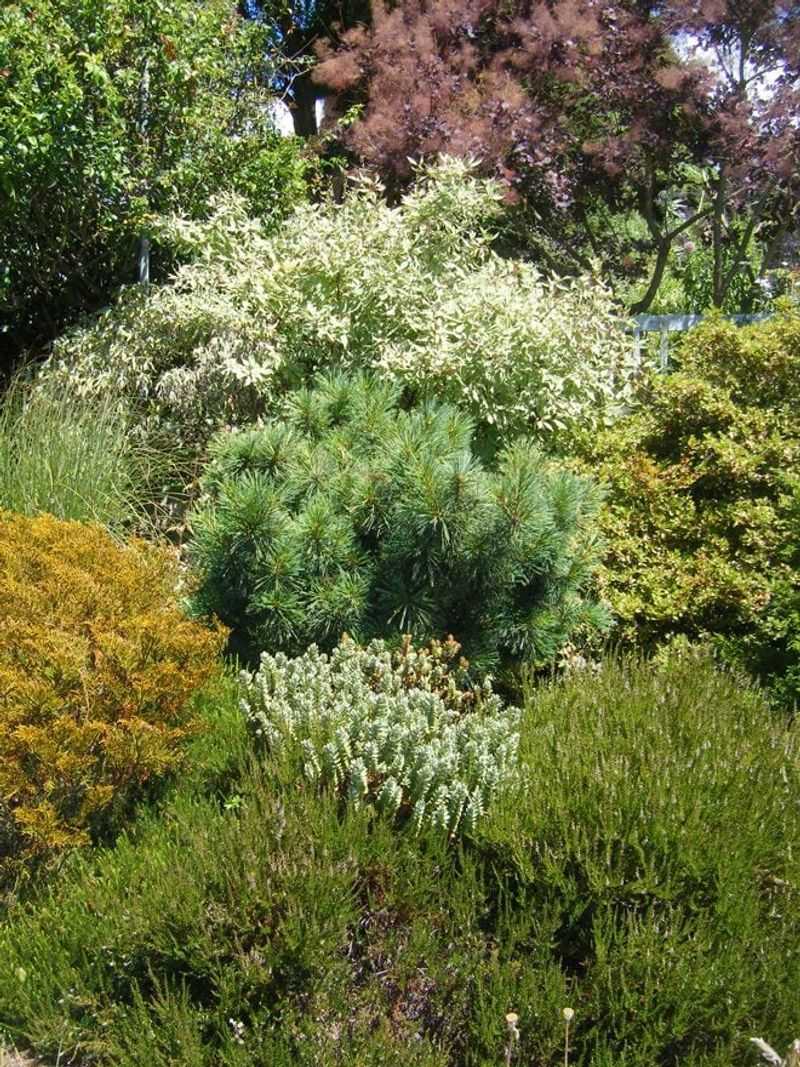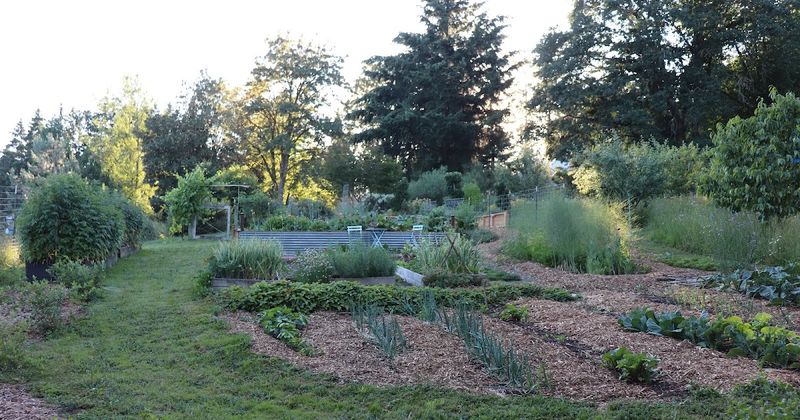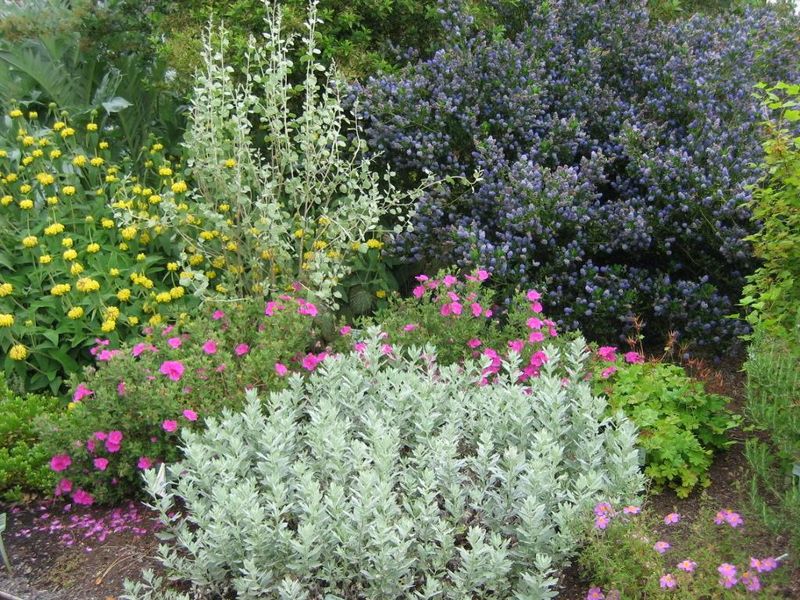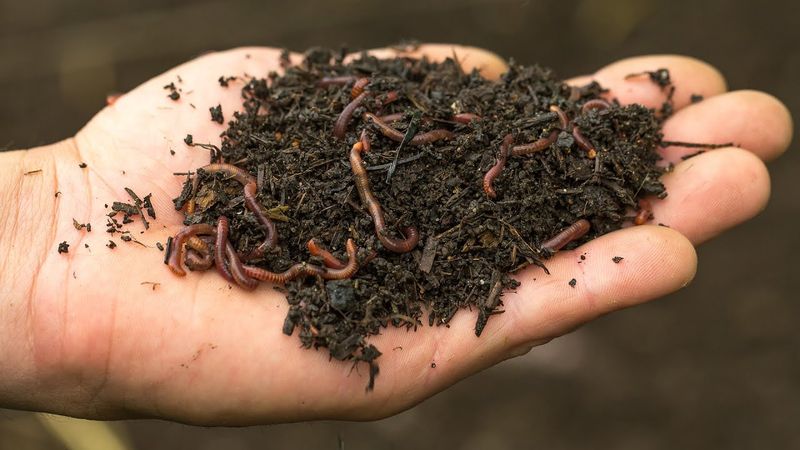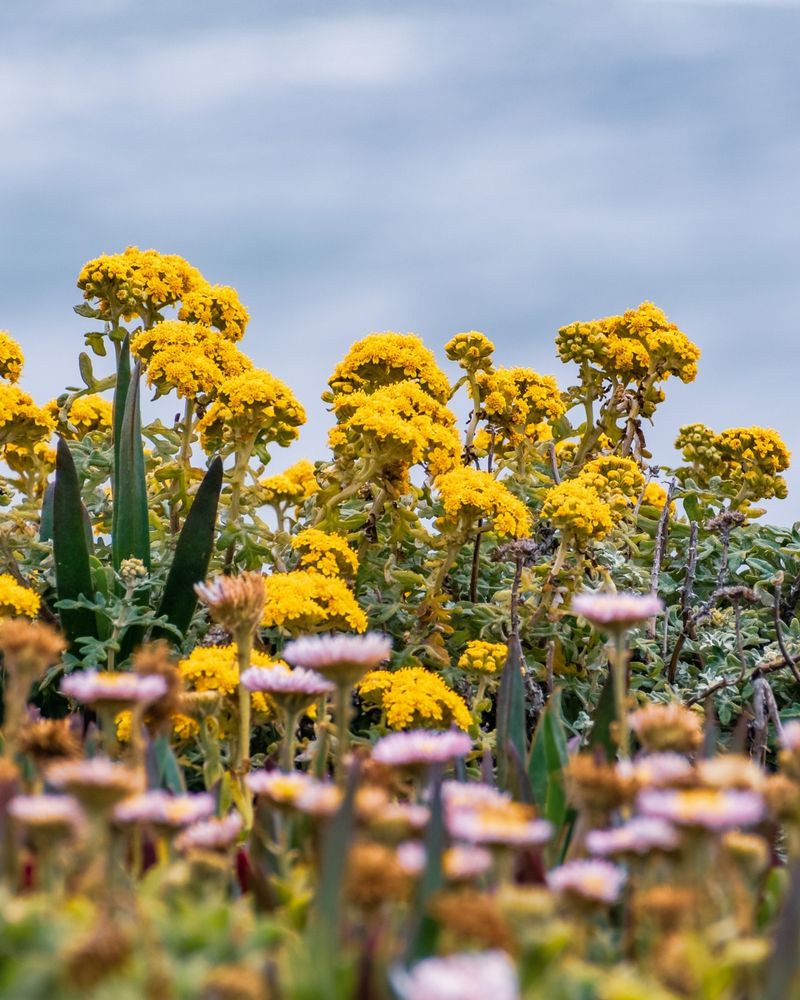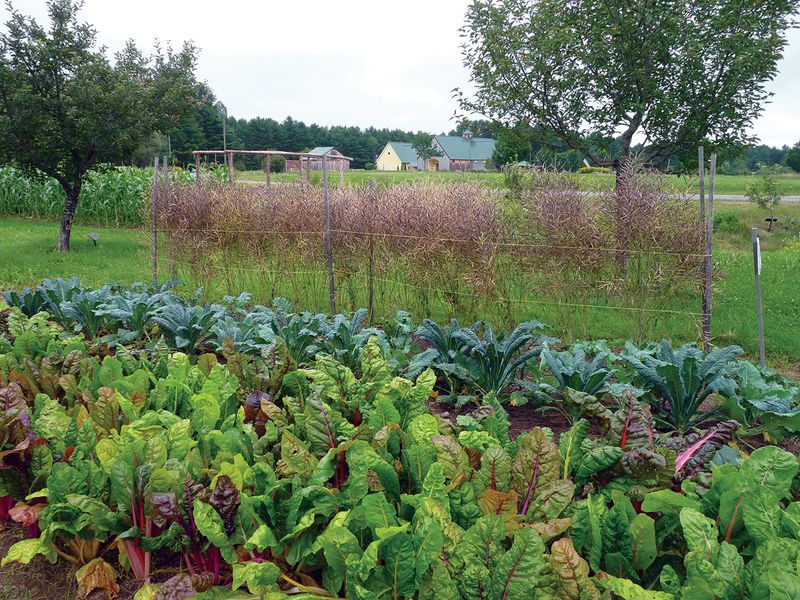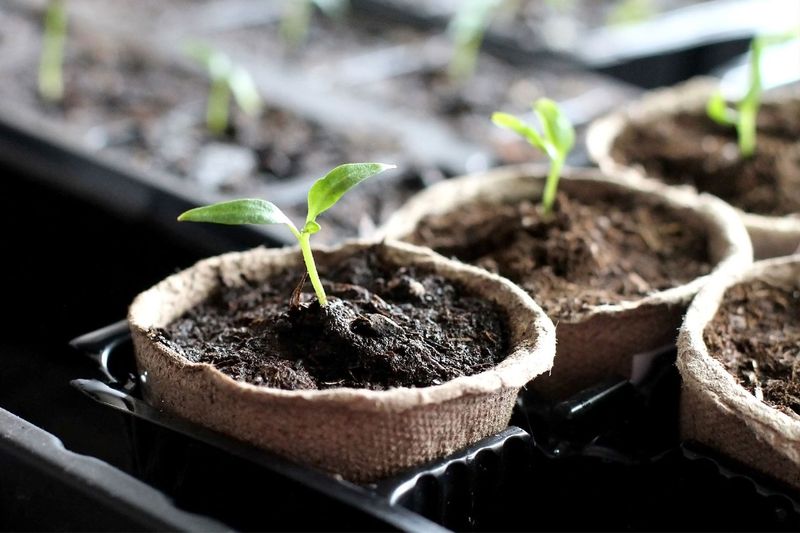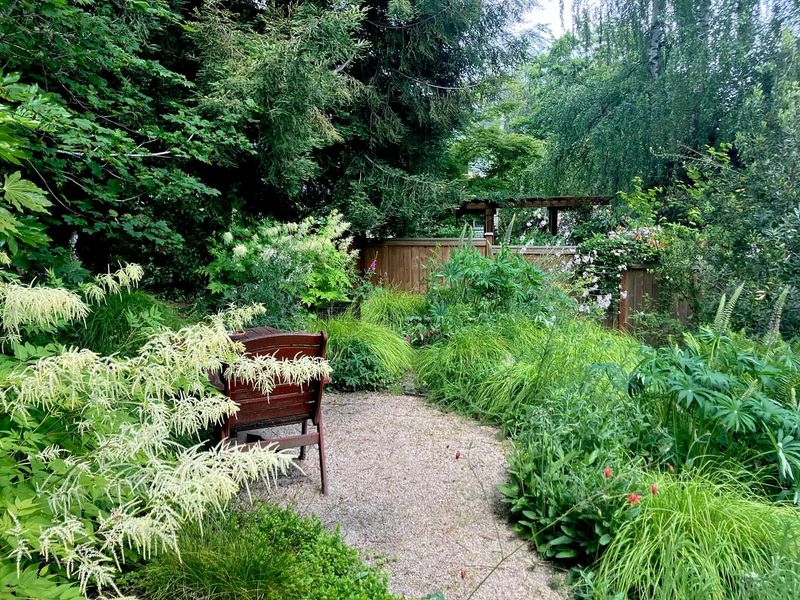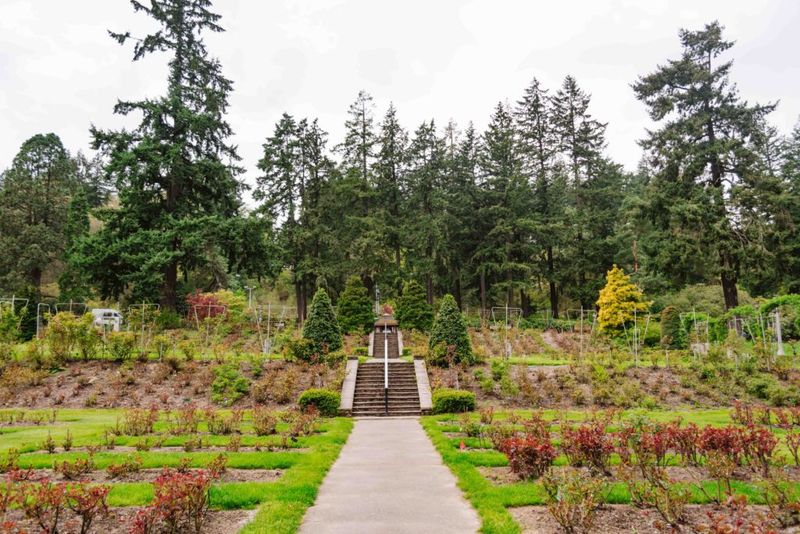Gardening in Oregon presents unique challenges and opportunities due to the state’s diverse climate zones. From the rainy western valleys to the drier eastern plateaus, Oregon gardeners face a wide range of growing conditions that traditional methods don’t always address effectively.
Chaos gardening—a less structured, more intuitive approach to working with plants—has gained popularity among Oregon’s green thumbs in recent years. This method embraces natural processes rather than fighting against them, allowing plants to find their own balance within the ecosystem.
Many Oregon gardeners are discovering that letting go of rigid garden plans can lead to surprising benefits. With unpredictable weather patterns becoming more common across the state, this adaptive style of gardening offers practical solutions while requiring less maintenance than conventional approaches.
1. Adapting To Unpredictable Weather Patterns
Oregon’s weather can swing from drought to deluge without warning. Allowing plants to grow where they naturally thrive creates gardens that withstand these extremes better than carefully planned beds.
When unexpected frost hits the Willamette Valley or heat waves bake Southern Oregon, self-seeded plants often show remarkable resilience. They’ve essentially chosen their own microclimate.
Many gardeners report that volunteer plants—those that appear without being deliberately planted—frequently outperform their carefully cultivated counterparts during weather challenges.
2. Saving Time On Garden Planning
Meticulously mapping out garden beds takes hours that busy Oregonians often can’t spare. The chaos approach eliminates this planning phase entirely.
Rather than researching companion planting charts and creating elaborate rotation schedules, gardeners simply observe what works. Seeds get scattered, plants reseed themselves, and the garden evolves naturally.
For working parents and professionals in Portland’s fast-paced environment, this time-saving benefit proves especially valuable during spring’s narrow planting window.
3. Creating Wildlife Habitats Naturally
Wild, less-manicured spaces attract significantly more beneficial creatures than tidy gardens. Oregon’s native pollinators—from mason bees to Anna’s hummingbirds—flock to these biodiverse havens.
Leaving seedheads standing and allowing leaf litter to accumulate creates winter shelter for beneficial insects. These insects then help control garden pests naturally come spring.
Many gardeners along the Columbia River Gorge report seeing increased bird activity after switching to this approach, as birds find both food and nesting materials in the varied landscape.
4. Reducing Garden Maintenance Workload
Traditional gardens demand constant weeding, pruning, and pest management. The chaos method acknowledges that nature doesn’t need this level of intervention.
Many gardeners in Oregon’s rainy western regions find that dense, self-established plantings naturally suppress weeds. Plants growing where they “want to” often require less watering and fertilizing.
During summer droughts in Central Oregon, these resilient gardens need significantly less supplemental irrigation, saving both water and the gardener’s time.
5. Discovering Surprising Plant Combinations
When plants choose their own neighbors, unexpected partnerships emerge. In the Rogue Valley, gardeners report volunteer tomatoes thriving alongside native Oregon grape without any planning.
These spontaneous combinations often result in beautiful textural contrasts and extended bloom seasons that no garden designer could have predicted. Plants somehow find companions that support their growth needs.
Many gardeners keep journals documenting these successful pairings, creating a record of what works specifically in their unique Oregon microclimate.
6. Building More Resilient Soil Naturally
Oregon’s varied soil types—from clay in the Willamette Valley to volcanic in Central Oregon—benefit from the chaos approach. Diverse root systems at different depths naturally aerate and build soil structure.
When plants are allowed to die back in place, they create natural mulch layers that protect soil from erosion during Oregon’s heavy winter rains. This organic matter breaks down gradually, feeding soil life.
Gardeners in Eugene and Salem report dramatically improved soil quality after several years of this approach, with noticeably more earthworms and beneficial fungi present.
7. Embracing Native Plants’ Natural Patterns
Native Oregon plants have evolved strategies perfectly suited to local conditions over thousands of years. The chaos method honors these adaptations rather than forcing plants into unnatural arrangements.
Trillium, salal, and Oregon sunshine naturally form patches and drifts when left to their own devices. These groupings often follow microclimates invisible to human gardeners.
In coastal gardens from Astoria to Bandon, native plant communities established through this method show remarkable resistance to salt spray and strong winds.
8. Allowing Plants To Find Their Perfect Spot
Plants have an uncanny ability to germinate where conditions suit them best. In Hood River gardens, self-seeded lettuce often thrives in spots that would never have been chosen by the gardener.
This natural selection process means plants establish in microsites that match their specific needs for light, moisture, and soil type. The results frequently surprise even experienced gardeners.
Many Oregon gardeners report that volunteer seedlings from parent plants seem to inherit improved adaptation to local conditions, becoming more drought-tolerant or cold-hardy over generations.
9. Saving Money On Plants And Seeds
Garden centers in Portland, Eugene and Bend offer tempting arrays of plants, but costs add up quickly. The chaos method relies heavily on self-seeding and division, drastically reducing purchasing needs.
Many gardeners maintain “mother plants” that provide seeds or divisions year after year. These free plants often outperform expensive nursery stock because they’re already adapted to local conditions.
During economic downturns, Oregon community gardens report increased interest in this approach as families seek to grow food affordably without continually buying new plants.
10. Reducing Pest And Disease Problems
Monocultures create paradise for pests, while diverse chaos gardens confuse them. Oregon slugs may find and devour a row of identical lettuce plants, but struggle to locate scattered individuals mixed among other species.
Plant diversity disrupts the spread of diseases that typically move easily through single-species plantings. A fungal issue might affect one tomato plant but fail to reach others separated by different plant types.
Gardeners in Portland’s west hills report fewer deer problems with this approach—apparently, deer prefer the predictability of traditional gardens where favorite plants grow in easily browsed groups.
11. Coping With Oregon’s Varied Microclimates
Within a single Oregon property, temperatures and moisture levels can vary dramatically. The chaos method allows plants to establish where conditions suit them best, rather than forcing them into predetermined locations.
A south-facing slope in the Umpqua Valley might vary by several growing zones from a north-facing one just yards away. Plants naturally migrate to their preferred spots when allowed to self-seed.
Gardens in the Columbia Gorge particularly benefit from this approach, as wind patterns create complex microclimates that conventional garden plans often fail to address.
12. Finding Joy In Unexpected Garden Surprises
The unpredictable nature of chaos gardening brings continuous discovery. Bend gardeners delight in finding volunteer sunflowers creating stunning backdrops for perennials they’d never have planned themselves.
Children especially connect with this gardening style, experiencing the magic of unexpected seedlings emerging and plants creating their own beautiful arrangements. Family gardens become adventures rather than chores.
Many gardeners report that this approach rekindled their passion for gardening after years of feeling burdened by maintaining perfect, planned spaces.
13. Adapting To Climate Change Realities
Oregon’s climate is changing, with longer droughts and more extreme weather events becoming common. Traditional garden plans based on historical weather patterns increasingly fail.
The chaos approach allows gardens to adapt in real time through natural selection. Plants that can’t handle new conditions fade away, while those that thrive spread seeds and establish stronger presences.
In the Rogue Valley, where summer temperatures regularly exceed 100°F now, gardeners report that self-selected plant communities handle heat waves better than carefully designed landscapes.
14. Honoring Oregon’s Natural Ecosystems
From coastal dunes to high desert, Oregon’s natural landscapes follow chaos principles rather than human designs. Many gardeners seek to echo these patterns out of respect for local ecology.
Gardens in Ashland and Medford increasingly mimic the natural plant communities of oak savannas and mixed woodlands. This approach feels more connected to the surrounding landscape than formal European-style gardens.
Native tribes historically managed landscapes with minimal intervention, and some Oregon gardeners draw inspiration from these traditional ecological knowledge systems.
15. Creating Gardens That Tell Stories
Every volunteer plant in a chaos garden has a history—perhaps birds dropped the seeds, or wind carried them from a neighbor’s yard. These origins create garden narratives that planned spaces lack.
Many Eugene gardeners can point to plants that are descendants of specimens from gardens long gone or varieties shared through generations. These living connections hold meaning beyond aesthetics.
Family gardens become time capsules, with certain plants marking specific years and events—”the sunflower that grew after our camping trip” or “the berries that arrived with the new bird feeder.”


